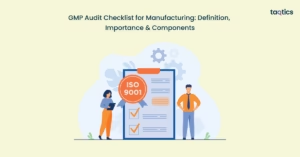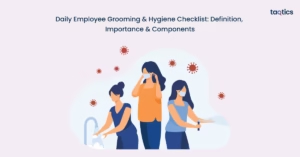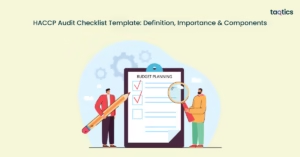Retail Health and Safety Checklist
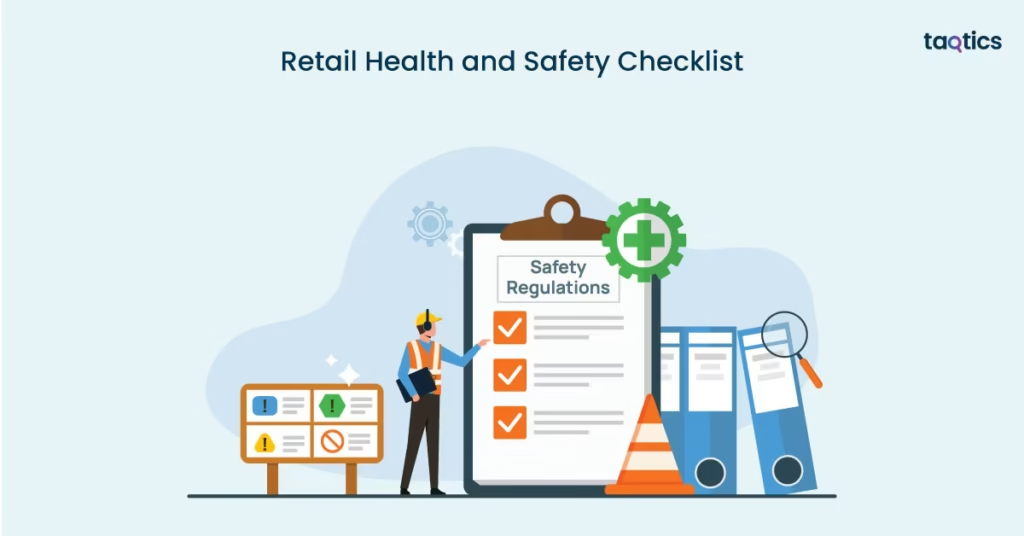
The retail health and safety checklist is a vital tool designed to help retail businesses maintain a safe and compliant environment for employees, customers, and visitors. A retail health and safety checklist, being well-structured, serves as a practical tool to identify potential hazards, maintain compliance with legal regulations, and promote a safe and welcoming atmosphere for everyone. In a setting where daily operations involve constant movement, public interaction, and various potential hazards, this checklist provides a structured approach to identifying risks, promoting best practices, and ensuring all safety protocols are met.
This checklist is designed to help retail managers and staff systematically assess risk areas, implement best practices, and maintain a clean, organized, and secure workplace. Regular use of this checklist not only supports day-to-day operations but also reinforces a culture of safety and responsibility throughout the organization. By regularly completing this checklist, retail teams can proactively manage workplace hazards, support legal compliance, and foster a culture of safety and accountability across all areas of operation.
A 2024 Retail & Wholesale Injury Report considered over 22,000 injury claims that revealed 38% of injuries occurred among workers in their first year on the job, highlighting the need for effective onboarding and training.
What is a Restaurant Checklist?
A retail health and safety checklist is a tool used in stores to make sure everything is safe, clean, and working properly. A retail health and safety checklist helps store managers and staff check for hazards and fix problems before someone gets hurt or something goes wrong.
Retail stores are busy places with lots of people walking around, handling products, and using equipment. That means accidents can happen if things aren’t kept in order. This checklist helps staff follow safety rules every day so everyone, employees and customers, stays safe.
The checklist usually includes tasks like checking for spills, making sure shelves are secure, and confirming that emergency exits are not blocked. It can be used daily, weekly, or as needed, depending on the type of store.
Why Health and Safety in the Retail Industry Matters?
Health and safety in the retail industry matter because they ensure protection for the business, employees, and customers.
1. Legal Implications and OSHA Fines
Retail businesses must follow safety laws and regulations. In the U.S., OSHA (Occupational Safety and Health Administration) sets these rules. If a store fails to meet them, it can face serious consequences, including:
- Fines that can cost thousands of dollars per violation
- Legal action if an employee or customer is injured
- Business shutdowns in severe cases
Having proper health and safety procedures, like using checklists and training staff, can help avoid these risks.
2. Employee Retention and Well-Being
A safe workplace shows employees that their health matters. This leads to:
- Fewer injuries and sick days
- Happier, more motivated staff
- Lower turnover, which saves money on hiring and training
When employees feel safe and supported, they’re more likely to stay and do their best work.
3. Customer Safety and Brand Reputation
Customer safety is just as important as employee safety. A single slip, fall, or accident can lead to:
- Lawsuits and compensation claims
- Negative reviews or bad press
- Loss of customer trust
On the other hand, a clean and well-maintained store builds a positive brand image and keeps people coming back.
4. Insurance Risk Reduction
Insurance companies look at how well a business manages safety. If a store has a strong safety record, it can:
- Lower its insurance premiums
- Avoid claim denials due to negligence
- Protect itself financially in case of accidents
Maintaining good safety practices can directly save the business money in the long run.
Health and safety are all about protecting your people, your profits, and your reputation. By staying compliant, supporting your team, and keeping customers safe, you build a stronger, safer business.
Who Needs a Retail Health and Safety Checklist?
Every type of retail business needs a retail health and safety checklist, be it an independent store or a chain and a franchise, a specialty shopor a pop-up retail environment.
1. Independent Stores
Small, independent shops often have fewer staff and resources, so it’s easy to overlook safety details. A checklist helps owners and employees stay organized and make sure nothing important is missed, keeping everyone safe and the business running smoothly.
2. Chains and Franchises
Larger retail chains and franchises have many locations, which means consistent safety standards are critical. A checklist ensures every store follows the same health and safety rules, protecting the brand’s reputation and reducing risks across all outlets.
3. Specialty Shops
Stores that sell specific products, like electronics, cosmetics, or home goods, may have unique safety concerns. For example, electronics stores need to check electrical equipment, while cosmetic shops must handle chemicals safely. A tailored checklist helps manage these special risks.
4. Pop-Up Retail Environments
Temporary or pop-up shops are often set up in new locations quickly and might face unfamiliar safety challenges, like limited space or different layouts. Using a health and safety checklist helps these businesses quickly identify hazards and keep staff and customers safe during their short time open.
Whether you run a small boutique, a big franchise, a specialty store, or a temporary pop-up, a retail health and safety checklist is an essential tool to keep your business safe and successful.
How to Conduct a Retail Risk Assessment?
There are five steps to conduct a retail risk assessment,that helps find and fix potential dangers in the store.
Step 1: Identify Hazards
Walk through your store and look for anything that could cause harm. Think about:
- Wet floors that could lead to slips
- Boxes or wires in walkways that could cause trips
- Faulty lighting or broken shelves
- Poorly stored cleaning chemicals
Check all areas—sales floor, stockroom, break areas, and entrances.
Step 2: Determine Who Might Be Harmed and How
Next, think about who could be affected by each hazard:
- Staff could get hurt lifting heavy boxes or working around equipment
- Customers could slip or fall in unsafe areas
- Delivery drivers or visitors might be exposed to risk in loading zones
Understanding who’s at risk helps you decide how to protect them.
Step 3: Evaluate Risks and Control Measures
Now, look at how likely it is that harm will happen, and how serious it would be. Then, decide what you can do to reduce the risk. Ask:
- Can the hazard be removed completely?
- Can warning signs or safety gear help?
- Do staff need extra training or reminders?
For example, placing a “wet floor” sign and cleaning spills quickly reduces the risk of slipping.
Step 4: Record Your Findings
Write down what you found and what actions you’re taking. This helps you:
- Stay organized
- Show proof of safety steps if needed (e.g., in case of an inspection or accident)
- Track improvements over time
Even in small shops, keeping a simple record can make a big difference.
Step 5: Review and Update Regularly
Retail environments change, new stock arrives, displays move, and seasons bring different challenges. That’s why it’s important to:
- Review the risk assessment regularly (e.g., every 3–6 months)
- Update it when anything in the store changes
- Re-check after accidents or near misses
Regular updates keep your safety plan current and effective.
A good retail risk assessment helps you find dangers early, protect people, and follow safety rules, protecting employees, customers, and the business itself.
What are the Core Components of a Retail Health and Safety Checklist?
The core components of a retail health and safety checklist include everything from store layout and walkways and personal protective equipment (PPE) to fire safety and emergency planning.
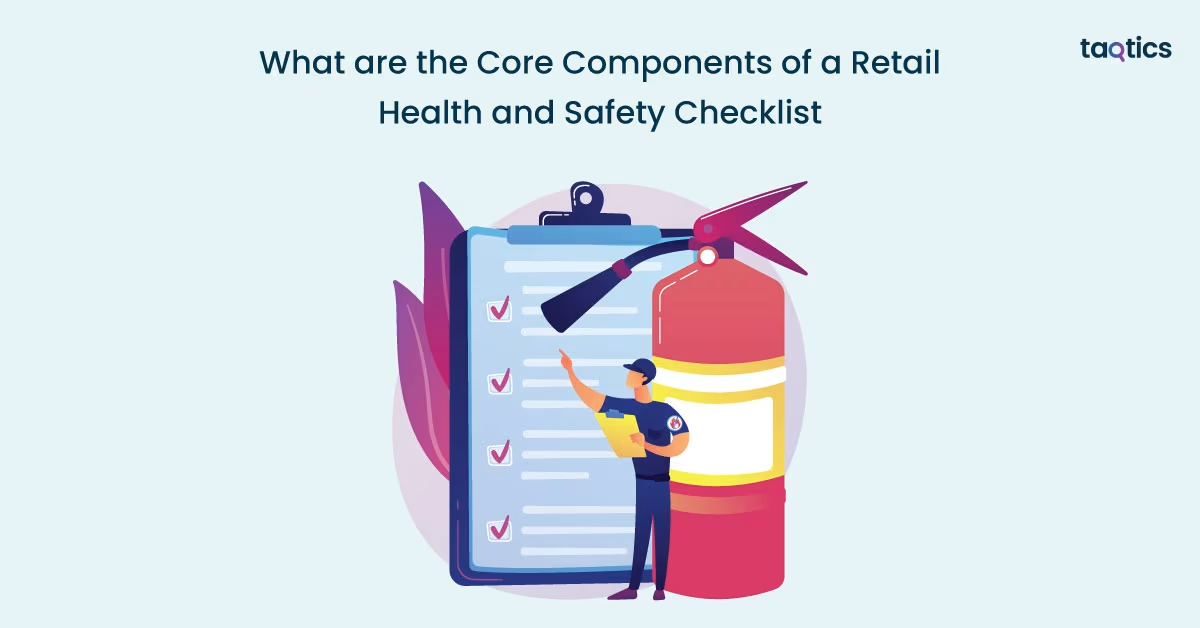
Store Layout and Walkways
A safe and well-organized store layout is essential for preventing accidents and creating a positive experience for both customers and employees. One of the most important aspects is aisle clearance. All walkways should be free from clutter, such as boxes, merchandise, or equipment, to reduce the risk of trips and falls. Clear aisles also ensure that emergency exits and fire routes are accessible at all times, which is essential during an evacuation.
Another critical component is proper lighting. Well-lit spaces help people move around safely and spot potential hazards. Poor lighting, such as flickering or burnt-out bulbs, can lead to accidents and make the store feel unsafe. Ensuring all areas, especially entrances, aisles, stairways, and emergency exits, are properly illuminated is vital for both safety and a positive customer experience.
Accessibility is also a major concern. The store layout should allow everyone, including individuals with disabilities, parents with strollers, and elderly customers, to move freely and safely. This means keeping aisles wide enough for wheelchairs, maintaining clear paths to accessible entrances, and ensuring that features like ramps and automatic doors are functioning properly.
Including these elements in a regular safety checklist helps prevent accidents, ensures compliance with regulations, and promotes a welcoming environment for all.
Fire Safety and Emergency Planning
In a busy retail environment, where large numbers of people may be present at any given time, being prepared for fire-related emergencies is critical. One of the most important elements is ensuring that emergency exits are clearly marked, well-lit, and always kept clear of obstructions. Blocked or hard-to-locate exits can cause confusion or delays in an evacuation, putting lives at risk during an emergency.
Equally important are fire extinguisher inspections. Fire extinguishers must be easily accessible, properly mounted, and regularly inspected to ensure they are fully charged and in working order. Many jurisdictions require monthly visual checks and annual professional servicing. Including these checks in your safety checklist helps ensure compliance and readiness in case of a fire.
In addition, fire drill logs should be maintained to document regular emergency practice drills. These logs provide a record that drills are being conducted, staff know evacuation procedures, and the team can respond quickly in real situations. Practicing and recording fire drills not only improves safety awareness but also demonstrates that the business is actively managing fire risks.
Electrical and Equipment Safety
Electrical and equipment safety is a vital part of the checklist, as poorly maintained or faulty equipment can lead to serious injuries, fires, or equipment failure. One of the key areas to monitor is the condition of cables and plugs. Loose, frayed, or exposed wires pose a significant risk of electric shock or fire. Retail staff should regularly check that all electrical cords are properly secured, undamaged, and not trailing across walkways where they could become a trip hazard.
In addition to checking cords and plugs, machine maintenance is essential for equipment that is used daily, such as tills, scanners, coffee machines, or refrigeration units. Regular servicing helps prevent breakdowns and reduces the risk of mechanical failure that could harm staff or disrupt business operations. Scheduled maintenance should be recorded and included in the checklist to ensure nothing is missed.
Another important aspect is Portable Appliance Testing (PAT), particularly in countries like the UK where it is a common legal and safety requirement. PAT testing involves checking electrical equipment to make sure it’s safe to use. This includes visual inspections and electronic testing of appliances like kettles, printers, and cash registers. Keeping records of PAT tests and ensuring they are up to date shows a proactive approach to electrical safety.
By regularly checking cables and plugs, maintaining machines, and conducting PAT testing, retailers can significantly reduce the risk of electrical hazards. Including these checks in a health and safety checklist not only protects staff and customers but also ensures compliance with safety regulations and supports smooth day-to-day operations.
Personal Protective Equipment (PPE)
Personal Protective Equipment (PPE) protects retail staff from common workplace risks, especially in environments where employees handle cleaning chemicals, heavy stock, or interact closely with customers. Depending on the nature of the store, PPE may include gloves for handling goods or cleaning, masks for hygiene or air quality control, and safety shoes to prevent injuries from dropped items or slippery floors. Including PPE checks in a health and safety checklist ensures that the right protective gear is used when needed.
Proper storage and availability of PPE are just as important as the gear itself. PPE should be kept in clean, dry, and accessible areas, so staff can quickly grab what they need without delays. The checklist should include regular reviews of PPE stock levels, condition, and location. If items are damaged or missing, they must be replaced immediately to avoid leaving employees unprotected.
Training for PPE usage is essential to make sure staff understand when and how to use protective gear correctly. This includes knowing how to fit masks properly, when gloves need to be changed, and how to care for reusable PPE. Without training, even the best equipment may not offer proper protection. Regular reminders or refresher sessions can be included in staff safety meetings or onboarding processes.
By ensuring the right PPE is provided, stored correctly, and used properly, retail businesses can greatly reduce health risks for their employees. Including PPE checks and procedures in the checklist reinforces a culture of safety and demonstrates a clear commitment to staff well-being.
Manual Handling and Lifting Safety
Manual handling and lifting safety is a key component of a retail health and safety checklist, as retail workers frequently move boxes, stock shelves, and handle deliveries. Poor lifting practices are a common cause of injuries, particularly to the back, shoulders, and knees. That’s why it’s important to monitor and encourage proper lifting techniques. Employees should be reminded to bend their knees, keep their back straight, and lift with their legs, not their back. Items should be kept close to the body when lifting, and twisting while carrying should be avoided. Including checks for lifting safety in daily routines helps prevent strain and injury.
The use of trolleys, pallet jacks, or other lifting aids also plays a major role in reducing physical stress on workers. These tools make it easier and safer to transport heavy or bulky items over distances. A good health and safety checklist will include regular inspections of this equipment to ensure it’s in good condition and stored in the right places so employees can access it easily. Encouraging the use of lifting aids helps create a culture where staff feel supported and are less likely to take risks that could result in injury.
Lastly, staff training is essential to make manual handling safety effective. It’s not enough to provide equipment. Employees need to know how and when to use it. Training should cover safe lifting practices, recognizing personal limits, and using tools correctly. This training should be part of new employee onboarding and revisited regularly through refresher courses or team briefings. Including training checks in the safety checklist ensures that all staff remain aware of best practices and that new hires are properly prepared.
By focusing on safe lifting techniques, the proper use of equipment, and regular training, retailers can significantly reduce the risk of injuries and improve workplace efficiency. Including manual handling safety in the checklist helps protect both employees and business operations.
Hygiene and Sanitation Standards
Hygiene and sanitation standards are fundamental to maintaining a safe and welcoming retail environment. Regular cleaning schedules should be in place to ensure that high-traffic areas such as entrances, checkout counters, fitting rooms, and staff break areas are kept clean and hygienic. These schedules help prevent the buildup of dirt, dust, and germs, reducing the risk of illness or contamination. A detailed cleaning routine, documented and followed daily, should be included in the Retail Health and Safety Checklist to ensure consistency and accountability.
Restroom sanitation is another critical aspect of retail hygiene. Clean and well-stocked restrooms reflect positively on the store and are essential for both customer satisfaction and employee well-being. Toilets, sinks, floors, and frequently touched surfaces like door handles and soap dispensers should be cleaned multiple times a day. The checklist should prompt regular inspections to confirm that restrooms are hygienic, functional, and equipped with essentials such as soap, paper towels, and toilet paper.
Even though COVID-19 restrictions may have eased in some areas, many COVID-19 measures are still considered best practice, especially in busy retail settings. This includes regular disinfection of high-touch surfaces, providing hand sanitizers at entry points, encouraging good hand hygiene among staff, and ensuring proper ventilation in enclosed spaces. Where local guidelines still require them, mask policies or physical distancing signs may also be relevant. Including COVID-19 precautions in the health and safety checklist (where applicable) shows a commitment to ongoing public health awareness and helps reduce the spread of illness.
Incident Reporting and First Aid
Incident reporting and first aid ensure that when accidents or health issues occur, they are handled quickly, properly, and in accordance with legal and safety standards. The first step is making sure that a fully stocked first aid kit is readily available in a clearly marked and accessible location. The kit should contain essential supplies like bandages, antiseptics, gloves, and pain relief, and it must be checked regularly to replace used or expired items. A well-maintained first aid kit can make a significant difference in the immediate response to minor injuries and reduce the severity of incidents.
In addition to physical supplies, a reporting system should be in place to document all workplace incidents, no matter how minor. This can be a traditional logbook or a digital incident reporting software that captures key details such as what happened, when and where it occurred, who was involved, and what actions were taken. Recording incidents not only helps identify patterns and prevent future accidents, but also ensures compliance with legal requirements and supports any insurance or workers’ compensation claims.
Another critical aspect is having clearly assigned first responders or staff trained in basic first aid. These individuals should be identified to all employees and available during all shifts. Their training enables them to respond quickly and effectively during emergencies, offering immediate care until professional medical help arrives if needed. Including checks for trained responders in the safety checklist ensures that the store is always prepared for medical incidents.
Security and Customer Safety
Security and customer safety protect both people and property. One of the most effective tools in maintaining a secure environment is the use of CCTV (closed-circuit television). Security cameras should be strategically placed throughout the store, covering entrances, exits, high-value areas, and blind spots. Regular checks should be included in the checklist to ensure that cameras are functioning, properly positioned, and that footage is being stored securely. CCTV not only helps deter theft and misconduct but also provides valuable evidence in the event of an incident.
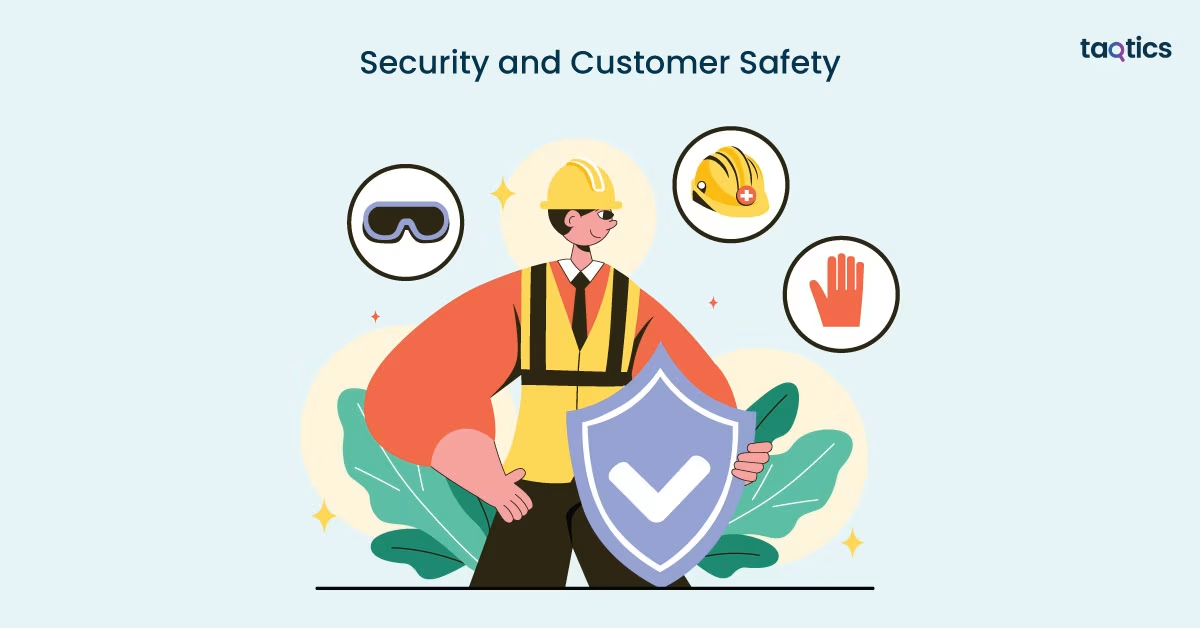
Anti-theft protocols are also critical in protecting merchandise and ensuring customer safety. These protocols may include bag checks, security tags on high-value items, locked display cases, and clear procedures for dealing with suspected theft. Staff should be trained to follow these procedures professionally and discreetly to avoid confrontation and maintain a positive shopping experience. A safety checklist should include reminders to inspect security equipment, monitor theft-prone areas, and review staff awareness of store policies.
In emergency situations, panic buttons offer an immediate way to alert security or emergency services. These buttons should be installed at key points such as cash registers, customer service counters, and back offices. Staff should know where they are located and when to use them. The checklist should ensure that panic buttons are regularly tested and that all employees are familiar with emergency response procedures.
By incorporating checks for CCTV, anti-theft measures, and emergency alert systems like panic buttons, retailers can create a safer environment for both customers and staff. These components not only help prevent loss and crime but also support a sense of security and confidence throughout the store.
Merchandise Display
Merchandise display is not only about aesthetics and sales, but also health and safety. One of the key elements is ensuring that all shelving is secure. Shelves, racks, and fixtures must be properly anchored and stable to prevent tipping, especially in high-traffic areas or stores that handle heavy or bulky items. Regular safety checks should confirm that there are no loose screws, unstable displays, or signs of wear that could lead to accidents.
Another important aspect is height and load distribution. Overloading shelves or stacking items unevenly can create hazards for both staff and customers. Heavier items should always be stored on lower shelves, while lighter goods can be placed higher up. This helps reduce the risk of toppling and makes lifting safer for employees. The retail health and safety checklist should include routine checks to ensure products are displayed in a safe and balanced way that follows weight capacity guidelines.
Finally, preventing falling items is essential for both injury prevention and customer comfort. Products should be stacked neatly, without overhanging edges, and display fixtures should be designed to contain or support items securely. In areas prone to customer interaction, such as self-serve displays or seasonal end caps, extra care should be taken to ensure merchandise doesn’t shift or fall easily. Including this in your checklist helps staff identify and fix unstable displays before they become a hazard.
By checking for stable shelving, proper load distribution, and safely arranged products, retailers can prevent accidents and maintain a store that is both inviting and safe.
Training and Communication
Training and communication are fundamental components of a Retail Health and Safety Checklist because they ensure that all staff understand and actively participate in maintaining a safe work environment. A strong starting point is safety onboarding for new hires. When new employees join, they should receive thorough training on the store’s health and safety policies, emergency procedures, and any specific risks related to their roles. This early education helps set clear expectations and empowers employees to work safely from day one.
In addition to initial training, regular refresher training sessions are crucial. These help reinforce important safety practices, update staff on any new regulations or store procedures, and address any identified gaps or incidents. Refresher courses keep safety top of mind and encourage a proactive approach to risk prevention. Including refresher training in the checklist ensures it happens consistently and is documented.
Effective internal communication tools support ongoing safety awareness and help share important updates quickly. This can include staff meetings, bulletin boards, email newsletters, or digital platforms where safety alerts, tips, and policy changes are communicated. Clear communication channels allow employees to report hazards, ask questions, and stay informed about health and safety topics. A retail health and safety checklist should verify that communication tools are in place and actively used to foster a culture of safety.
Install Proper Emergency Exit Signage
Installing proper emergency exit signage is a critical part of maintaining a safe retail environment. Clear and visible exit signs guide both customers and staff to safe routes during emergencies, such as fires or power outages. One of the most important factors in effective signage is illumination. Emergency exit signs must be well-lit at all times, often with built-in backup lighting to ensure visibility even if the main power supply fails. Proper illumination reduces confusion and panic during evacuations, helping everyone find their way quickly and safely.
Equally important is ensuring that emergency exit signage meets all compliance requirements set by local safety codes and regulations. These codes specify standards for sign size, color, placement, and illumination to guarantee consistency and effectiveness. Retailers should regularly review these requirements and update signage accordingly. Including checks for code compliance in the health and safety checklist helps avoid legal penalties and ensures that emergency exits are marked and are up to standard.
By focusing on well-illuminated, code-compliant emergency exit signs, retailers can enhance overall safety and preparedness. Incorporating this into a Retail Health and Safety Checklist not only supports effective emergency response but also demonstrates a strong commitment to protecting employees and customers.
Eliminate Tripping Hazards
Eliminating tripping hazards is a vital aspect of maintaining safety in any retail environment. One common source of trips and falls comes from improperly placed floor mats or loose cords. Floor mats should lie flat without curled edges or wrinkles that could catch feet, while cords must be secured or routed away from walkways to prevent accidents. Regular inspections included in the checklist help ensure these potential hazards are identified and addressed promptly before anyone gets hurt.
Seasonal considerations also play a significant role in tripping risks. During rainy or snowy weather, customers and staff can track water and debris inside, making floors slippery and increasing the chance of slips and falls. Retailers need to proactively manage this by using absorbent mats at entrances, promptly cleaning wet areas, and ensuring walkways remain clear and dry. Including seasonal checks in the safety checklist helps the store prepare for changing conditions that affect floor safety.
Lastly, wet floor signs are essential tools for alerting everyone to temporary slip hazards caused by spills or cleaning. These signs should be placed immediately when floors are wet and removed only when the surface is completely dry. Including checks for the availability and correct use of wet floor signs in the checklist promotes awareness and helps prevent avoidable injuries.
By focusing on well-maintained floor mats and cords, adapting to seasonal risks, and using clear wet floor warnings, retailers can significantly reduce the risk of trips and falls.
These key components make a checklist complete and reliable. Hence, retailers must ensure having everything is included in their health and safety checklist.
What are the Daily, Weekly, and Monthly Retail Health and Safety Checklist Items?
The daily, weekly, and monthly retail health and safety items keep safety management organized and effective. It helps divide checklist items into daily, weekly, and monthly categories. This approach ensures that routine tasks receive regular attention while less frequent but equally important checks are not overlooked.
Daily checklist items typically include tasks that address immediate risks and maintain a safe environment day-to-day. Examples might be inspecting walkways for tripping hazards, checking emergency exits for obstruction, ensuring fire extinguishers are visible, and verifying first aid kits are stocked. These tasks are usually completed by frontline staff or store managers at the start or end of each day to quickly identify and fix issues.
Weekly checklist items often involve deeper inspections or maintenance, such as testing emergency lighting, checking stockroom organization, reviewing incident reports, and verifying cleaning schedules. These can be assigned to supervisors or health and safety officers who have a broader view of store operations and can coordinate necessary follow-ups.
Monthly checklist items focus on comprehensive safety audits and preventive maintenance, including reviewing staff training records, conducting full fire extinguisher inspections, checking electrical equipment via PAT testing, and assessing overall compliance with safety policies. Store managers or designated safety officers usually handle these tasks, sometimes with external auditors or specialists involved.
Organizing these tasks in tables or bullet lists by frequency helps clarify responsibilities and creates a structured workflow. For example:
- Daily: Clear aisles, check emergency exits, restock PPE
- Weekly: Test emergency lights, review incident log, clean HVAC filters
- Monthly: Conduct fire extinguisher check, update training records, PAT test equipment
Who should complete these tasks depends on the store’s size and staffing, but typically ranges from frontline employees and supervisors to store managers and safety officers. Clear assignment of responsibilities ensures accountability.
What are the Compliance Standards of Retail Health and Safety?
Compliance standards in retail health and safety refer to the laws and regulations that businesses must follow to ensure a safe working environment for employees and customers. These standards vary by country and region but generally cover hazard prevention, employee training, emergency procedures, and workplace conditions.
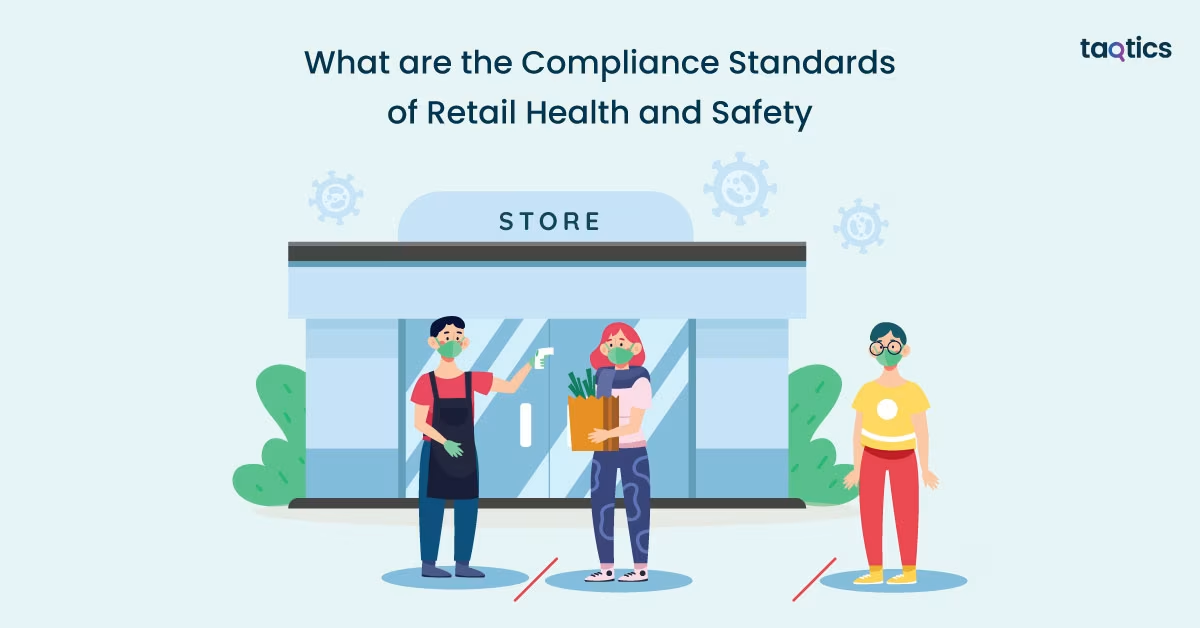
In the United States, the main regulatory body is the Occupational Safety and Health Administration (OSHA). OSHA sets specific workplace safety standards that retail stores must comply with, such as proper hazard communication, machine safety, emergency preparedness, and injury reporting. OSHA regularly inspects workplaces and provides guidelines tailored to the retail sector, helping stores minimize risks and maintain legal compliance.
In the United Kingdom and European Union, retail health and safety is governed by the Health and Safety Executive (HSE) and various EU directives. These regulations cover similar areas as OSHA but are often more detailed in certain aspects, like risk assessments, employee welfare, and safety training requirements. EU member states incorporate these directives into national laws, requiring retail businesses to implement comprehensive safety policies and regular audits.
In addition to national frameworks, local and state regulations may impose further requirements specific to a region or city. These can include rules around fire safety, signage, COVID-19 protocols, or waste management. Retailers must stay updated on these localized standards to avoid gaps in compliance.
Failing to meet health and safety standards can lead to serious penalties for non-compliance, including hefty fines, legal action, or even closure of the business. Beyond financial consequences, non-compliance damages reputation and can result in increased insurance costs or employee turnover. Severe incidents caused by negligence may also lead to criminal charges.
Understanding and adhering to these compliance standards is essential for any retail business. Incorporating them into health and safety checklists not only protects employees and customers but also safeguards the store’s operations and reputation.
What are the Tools and Resources to Simplify Retail Health and Safety?
Taqtics offers the best tools and resources to make it much easier to stay organized, compliant, and proactive. It offers retailers a centralized, user-friendly system to create, assign, and track health and safety checklists and tasks in real-time. With Taqtics, store managers and staff can access customizable checklists on mobile devices, ensuring that daily, weekly, and monthly safety inspections are completed consistently and accurately. This reduces paperwork, minimizes errors, and speeds up communication across teams.
The platform also provides automated reminders and alerts, helping teams stay on top of critical safety tasks such as equipment inspections, cleaning schedules, and emergency drills. By digitizing records, Taqtics ensures that all health and safety documentation is securely stored and easily accessible for audits or compliance reviews. This creates a clear audit trail, demonstrating due diligence and adherence to regulations.
Additionally, Taqtics enables real-time incident reporting and communication, so any hazards or safety concerns can be immediately flagged and addressed. This promotes a culture of safety awareness and continuous improvement throughout the retail operation. Taqtics equips retailers with an all-in-one, digital solution to simplify health and safety management, making it easier to maintain compliance, improve staff accountability, and protect both employees and customers.
By leveraging platforms like Taqtics, retail businesses can efficiently manage their health and safety programs in today’s fast-paced environment.
Downloadable Retail Health and Safety Checklist Free Template
How often should a retail safety inspection be conducted?
Retail safety inspections should be conducted regularly to maintain a safe environment. Daily inspections are essential for spotting immediate hazards like spills, blocked exits, or damaged equipment. Weekly checks focus on broader issues such as fire extinguisher functionality and stockroom safety. Monthly or quarterly audits allow for in-depth reviews of compliance, training, and maintenance schedules. The exact frequency may vary based on store size, foot traffic, and local regulations, but maintaining this routine helps prevent accidents, ensures legal compliance, and promotes a culture of safety. Consistency is key to identifying risks before they cause harm.
Who is responsible for health and safety in a retail business?
The store owner or employer is responsible for health and safety in a retail business. They must ensure the workplace meets legal safety standards and provide proper training, equipment, and policies. Managers and supervisors are responsible for day-to-day enforcement and monitoring, while employees must follow safety procedures, report hazards, and use equipment correctly. Everyone plays a role in maintaining a safe environment. In larger operations, a designated health and safety officer may oversee compliance and documentation. Clear roles and communication are essential to keeping the workplace safe for staff and customers alike.
How to Avoid Common Retail Safety Violations?
To avoid common retail safety violations, conduct regular inspections to catch hazards like blocked exits, wet floors, or overloaded shelves. Ensure emergency exits are clear and marked, and first aid kits are stocked. Keep cords secured, aisles clutter-free, and use wet floor signs during cleaning. Train staff on manual handling, PPE use, and incident reporting. Maintain fire extinguishers and test emergency lighting. Document all safety checks and stay updated on local regulations. Using digital tools like Taqtics can streamline tasks and recordkeeping. Proactive maintenance and ongoing training are key to preventing fines, injuries, and compliance issues.
What are the Financial Implications of Workplace Accidents and Injuries in Retail?
The financial implications of workplace accidents and injuries in retail can either be direct or indirect. Direct costs include medical expenses, workers’ compensation claims, and legal fees if the business is found negligent. Indirect costs can be even higher, such as lost productivity, temporary staffing, and employee retraining. Accidents often result in higher insurance premiums and may trigger regulatory fines, especially if safety violations are involved.
Beyond immediate costs, there’s a long-term impact on brand reputation, which can reduce customer trust and loyalty. Injuries can also affect employee morale and retention, leading to higher turnover and recruitment costs. Additionally, failing to maintain a safe environment may lead to lawsuits or investigations from agencies like OSHA or local health authorities. Investing in strong health and safety practices not only protects people but also helps avoid the financial strain caused by preventable accidents, making safety a smart business decision.
What are the Common Risks and Hazards in Retail Stores?
The common risks and hazards in retail stores can impact the safety of employees, customers, and operations.
- Slips, Trips, and Falls: Wet floors, uneven surfaces, loose mats, and cluttered walkways are frequent causes of accidents in retail spaces.
- Manual Handling Injuries: Lifting heavy boxes, stocking high shelves, or moving inventory without proper technique can cause strains, sprains, or back injuries.
- Fire Hazards: Blocked exits, overloaded electrical outlets, or faulty equipment can increase the risk of fire.
- Electrical Hazards: Exposed wires, damaged plugs, or improper use of extension cords may lead to shocks or electrical fires.
- Customer Incidents: Accidents involving customers, like falls or injuries from falling merchandise, can lead to liability issues and damage brand reputation.
- Workplace Violence or Theft: Aggressive customers, shoplifters, or cash-handling incidents pose safety and security concerns.
- Poor Ergonomics: Standing for long hours or repetitive tasks can cause fatigue or musculoskeletal issues for staff.
Addressing these hazards through regular safety checks, training, and proper equipment is essential to maintaining a safe retail environment.
How to Ensure Health and Safety in Retail Stores?
To ensure health and safety in retail stores, retail stores require a proactive and structured approach.
- Conduct Regular Risk Assessments: Identify potential hazards in the store, from slippery floors to fire risks, and take preventive action.
- Implement Daily, Weekly, and Monthly Safety Checklists: Use structured checklists to ensure routine inspections and maintenance tasks are completed consistently.
- Provide Staff Training: Train employees on manual handling, emergency procedures, PPE usage, and how to report incidents.
- Maintain Clean and Safe Store Layouts: Keep aisles clear, shelves stable, and exits accessible. Use proper signage for wet or hazardous areas.
- Ensure Proper Signage and Emergency Preparedness: Install illuminated exit signs, maintain first aid kits, and hold regular fire drills.
- Use Safety Tools and Technology: Leverage digital platforms like Taqtics for tracking tasks, inspections, and safety documentation.
- Comply with Local Laws and Regulations: Follow OSHA (US), HSE (UK), and local/state guidelines to avoid penalties and ensure legal compliance.
- Encourage a Safety Culture: Promote open communication, reward safe practices, and involve employees in safety initiatives.
By following these steps, retail businesses can reduce risks, stay compliant, and create a safer shopping and working environment.

